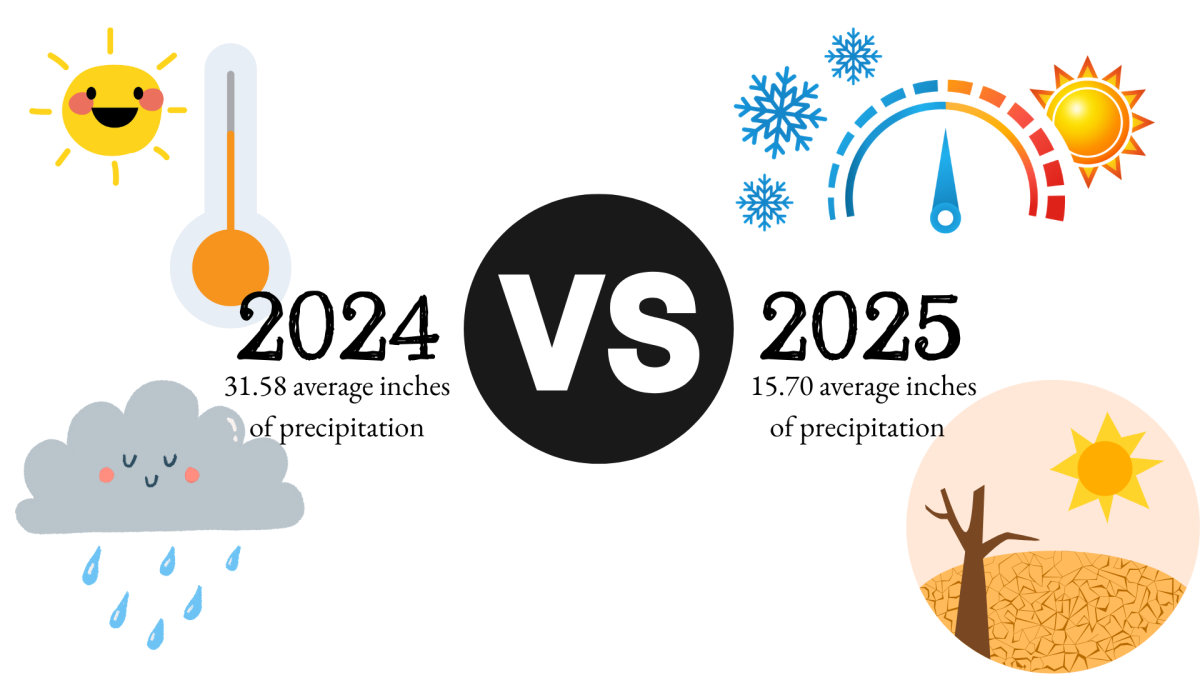Human activities, nature combine to drastically change the look of winter
January 31, 2022
Since 1880, temperatures have risen 0.14 degrees Fahrenheit, or 0.08 degrees Celsius, per decade.
A study conducted by NOAA, the National Oceanic and Atmospheric Administration, concluded that 2020 – nearly tied to 2016 – had the highest recorded general global temperature. This mainly applied to land areas, with temperatures rising 1.76 degrees Fahrenheit (0.98 degrees Celsius) above average. With climate reaching a new-found high, expected changes in winter conditions have been a concern.
NOAA’s winter outlook – expanding from December 2021 to February 2022 – made a prediction that the southern U.S. will experience above-average temperatures, accompanied with a La Nina climate pattern. This climate pattern brings warmer, drier winter conditions across the South. A drought is expected to trail through the West, up to the Northwest. Over the past year, this drought has lingered amongst this region, and will continue to be widespread in most areas. The Great Lakes, Ohio Valley, and the northern Rockies will be primarily affected by a wetter-than-usual environment.
The climate process, and the sudden changes that have recently occurred, is not primarily influenced by nature, but human activity as well. Scientists ascribed most global warming trends as part of the greenhouse effect, a process where greenhouse gases in the atmosphere encapture the heat produced from the sun. Human activities, distinctively referring to the usage of fossil fuels, broaden the unnatural process. In the decade of 1880, fossil fuels, such as coal, were introduced for utilization. Fossil fuels are the main source of heat and electricity in many homes and businesses from there on. Due to centuries of burning oil and coal, atmospheric carbon dioxide (CO2), or mixing of carbon dioxide and oxygen, surged greatly. Over two million metric tons of greenhouse gases have been released into the atmosphere since the First Industrial Revolution.
Increasing the atmospheric carbon dioxide brings multiple consequences, differing mainly depending on geographic location. Definite results of the greenhouse effect are difficult to specify, but it is likely that Earth will become warmer, overall increase in water evaporation and precipitation, increase in sea levels, and worsening droughts; according to an article published by NASA.
Major corporations are making headway towards eliminating their carbon footprint. Microsoft, for example, is planning on going carbon negative by 2030, and entirely eliminating their carbon emissions by 2050. Taking a principled approach, Microsoft aims to launch new technology that will help consumers reduce their individual carbon footprint.
It is important for people, individually, to undertake issues involving climate change themselves. A possible, impactful step into tackling climate change is to rely on renewable energy sources – such as wind energy, tidal energy, solar power, geothermal energy – to fulfill the same tasks as fossil fuels. Human actions have inadvertently tampered with natural processes on earth, resulting in sudden, drastic changes in global weather conditions – most noticeably, winter conditions.













![Lucia Haney [Editor in Chief] working hard to ensure Ink and Imagination is a success.](https://bulldogbarker.com/wp-content/uploads/2025/05/Ink-and-Imagination-1200x800.jpg)
